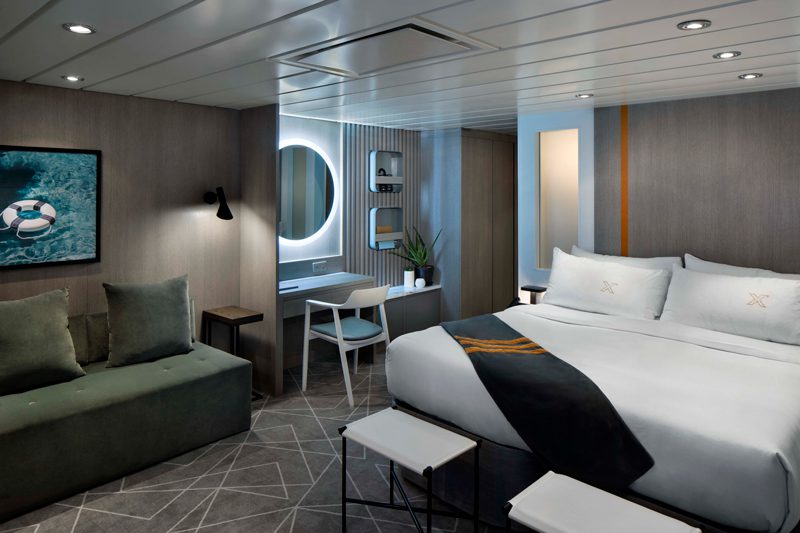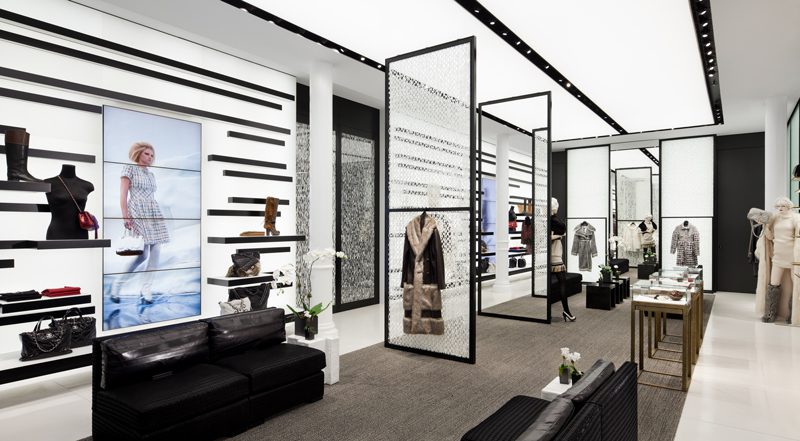
Understanding how to design for small spaces is one of a cruise interior designer’s many crucial tasks when creating onboard venues. Understandably, cruise ship real estate is limited, so maximising the existing space as effectively as possible is absolutely essential. To help the process along, we’ve put together eight handy interior design concepts ideal to make the most of small spaces, whether you’re designing for land or sea.
Inventive storage solutions
When it comes to designing for small spaces, secret storage is your best friend. Particularly in cruise cabins, space is limited so designers often hide storage in unexpected places. According to Cruise Critic, Disney Cruise Line ships feature ottomans that double up as storage compartments. Plus, there’s usually ample room allowed under the bed for additional items. These storage-focused design concepts mean guests won’t feel boxed in, even in the smallest of cabins.
Moveable and multipurpose furniture
While most furniture on cruise ships will be firmly bolted to the floor to avoid shifting during any rocky instances at sea, some furniture, such as beds, will be moveable. Additionally, most double beds in cabins can be separated and moved into different positions where space allows, meaning guests can configure the cabin to suit their unique needs. Luckily for cruise interior designers, marine interior suppliers continue to innovate the market with the introduction of multifunctional furniture, such as Morbid Line’s foldable furniture or Virgin Voyages’ configurable Seabed.
Make use of mirrors

One of the simpler interior design concepts to enact, introducing mirrors to a space can work wonders. When natural light is lacking, which it often is on cruise ships, (especially if you opt for an inside cabin), mirrors can make a room feel more spacious and light-filled than it is. Placing mirrors strategically around the room allows designers to manipulate light to ensure small spaces don’t feel claustrophobic.
Neutral colour palettes
The easiest way to make a small space feel smaller is to oppress it with dark colours. Using light, neutral colour palettes once again works to create a sense of lightness even where it’s naturally lacking. Designers can then incorporate a variety of textures to ensure the room doesn’t feel flat, while maximising the appearance of space.
Create zones
In larger spaces such as lobbies and outdoor areas, designers can create “zones” to make the most of the space. Creating different atmospheres within the same space can make it feel larger when done properly, as well as serving a variety of needs in one space. Curtains, separators, and multipurpose furniture can act to divide an area, while still making use of the space in question.
Bigger is better
When designing for small spaces you might be tempted to fit in as many items as possible to make the most of your real estate. In contrast, using fewer but more substantial items to furnish a space will make the room feel grander. Additionally, big statement items in terms of décor (think art and fixtures) will help small spaces to pack a punch regardless of their size.
Level up your design
Often neglected, working your interior design concepts up a space’s wall is a great way to ensure you’re making the most of your space. Designing at different levels can transform small spaces. Instead of keeping all your furniture and décor at one height, design upwardly using wall-mounted items, bookshelves, and art. Designing at a higher level helps to draw the eye up, making use of the vertical space and thus making a room feel larger. A great example of “levelling up design” is AD Associates’ award-winning work on Crystal Cruises’ Crystal Symphony. The design studio used bespoke artwork in the ship’s Silk Kitchen & Bar to make the most of the venue’s wall space and the results were as impactful as you might expect.

Glass works
Using glass is a great way to ensure spaces continue to be filled with light despite natural limitations. Using glass partitions, faux windows, and even sculptures made from glass will encourage a sense of spaciousness. Marine interior suppliers such as Galaxy Glass & Stone have seen the wonders glass panelling can do first-hand, pictured above on a currently confidential project.
To find out more about how to design for small spaces and designing for the cruise industry, join us at Cruise Ship Interiors Design Expo Americas. Find out about the next event here.
